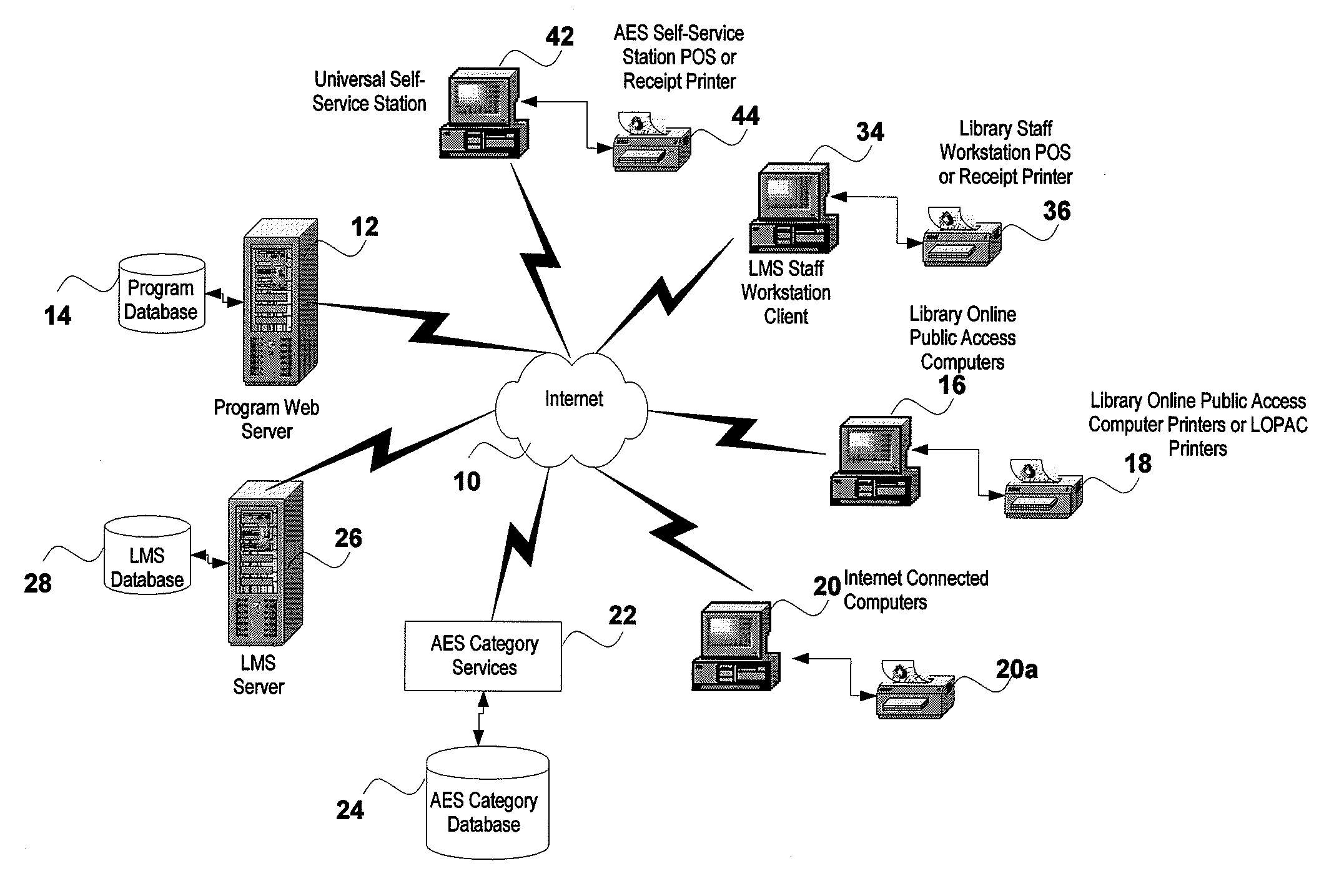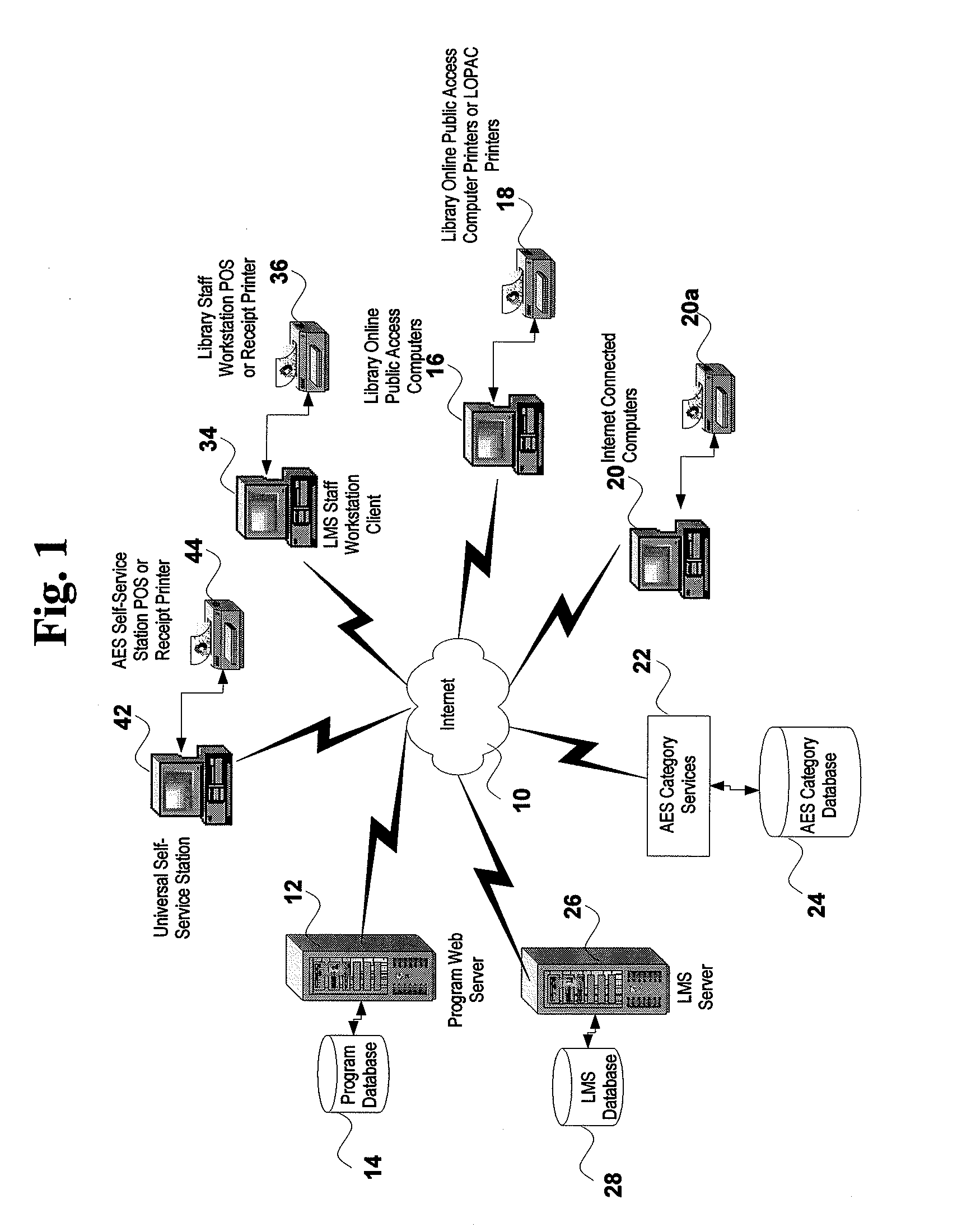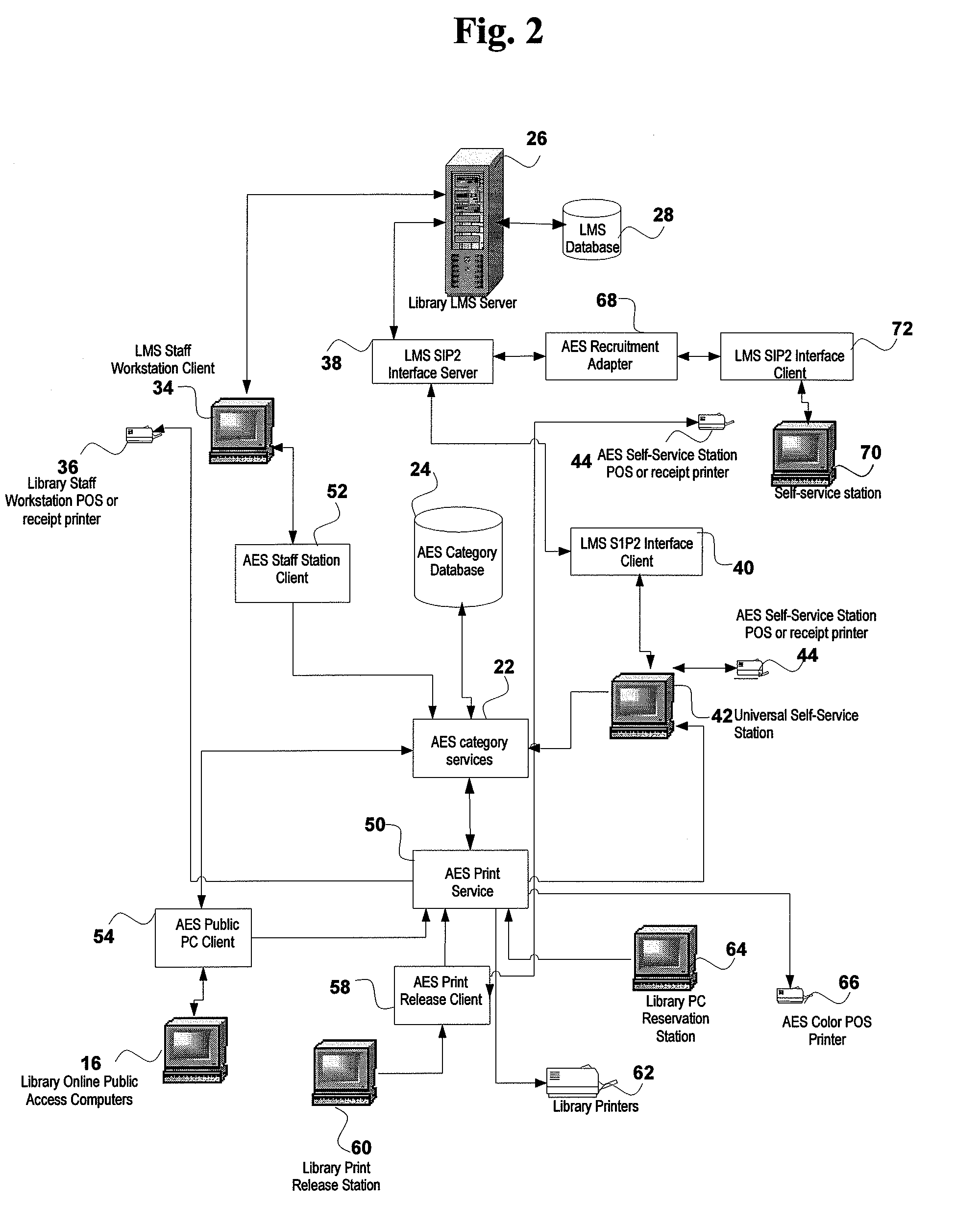Anonymity-ensured system for providing affinity-based deliverables to library patrons
anonymity-ensured system and affinity-based technology, applied in the field of anonymity-ensured system for providing affinity-based deliverables to library patrons, can solve the problems of inability to provide related product marketing information and would not be acceptable, system invasiveness, and services that do not provide additional content to their users, so as to improve library programming, enhance library usage, and improve library resources and programs.
- Summary
- Abstract
- Description
- Claims
- Application Information
AI Technical Summary
Benefits of technology
Problems solved by technology
Method used
Image
Examples
Embodiment Construction
[0093]In a preferred embodiment, the AES includes a relevancy detection module, a catalog service, a patron newsletter printing station, a content management service and on-line content. Relevancy detection modules are preferably located at points of checkout (e.g., staff checkout, self checkout) and at public computer stations within the library. These modules scan circulated materials and assets (e.g., books, periodicals, videotapes, DVDs, artifacts, CDs, computers and associated devices, audio video equipment, publication, original works, archives, materials, conference rooms, etc.) being checked out by patrons and forward indicia of the checked out materials to the catalog service. The catalog service correlates subject matter of the assets (including books, periodicals, CDs, DVDs, videos, computer usage, lecture hall service, teleconferencing service, etc) to predefined categories of interest. The patron newsletter printing stations are preferably located at the points of check...
PUM
 Login to View More
Login to View More Abstract
Description
Claims
Application Information
 Login to View More
Login to View More - R&D
- Intellectual Property
- Life Sciences
- Materials
- Tech Scout
- Unparalleled Data Quality
- Higher Quality Content
- 60% Fewer Hallucinations
Browse by: Latest US Patents, China's latest patents, Technical Efficacy Thesaurus, Application Domain, Technology Topic, Popular Technical Reports.
© 2025 PatSnap. All rights reserved.Legal|Privacy policy|Modern Slavery Act Transparency Statement|Sitemap|About US| Contact US: help@patsnap.com



